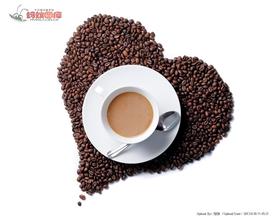Taste Rich Dominican Santo Domingo Coffee Flavor Description Grind Taste Variety Features
Unlike coffee produced in Haiti, most of the coffee grown in the Dominican Republic has been washed, which is a symbol of high quality. Miniga Coffee uses a washing method to treat coffee beans, so that the quality of treated coffee beans is more guaranteed. The coffee beans treated by washing method retain more original flavor than the drying method, and the aroma is pure and soft.
"Dominica Coffee beans | Santo Domingo (Santo Domingo) Coffee Dominica Republic (Dominican Republic) bean language teacher w.kaf.name"
Carefully selected in this way, the high-quality Dominican coffee exudes a faint aroma and gives people a faint fruity aroma with a lingering finish and a smooth and smooth finish.
Dominica coffee beans (Caribbean)
Coffee in Dominica is grown in highlands and lowlands, and its taste is slightly different. The upland is sour, but the taste is rich; the lowland is less sour and tastes smoother. Boutique coffee has become popular in recent years. High-quality coffee beans produced by some Dominican estates have a rich aroma, mellow taste and moderately bright sour taste, which are not far from the more famous Puerto Rico beans or Jamaican beans, and are also worth tasting. Dominica coffee beans are mild in acidity and have a rich fruity flavor.
In the west of Hispaniola, the harvest in the mountains above 1500 meters above sea level, the rich coffee Republic of Dominica (Dominican Republic) is adjacent to Haiti, both of which own the island of Hispaniola (Hispaniola). The best place to produce is the Barahona region in the southwest, but Juncalito and Ocoa also produce a fine coffee, Santo Domingo coffee, which is characterized by freshness and elegance, fullness, excellent acidity and pleasant aroma, so it is worth it. Unlike coffee produced in Haiti, most of the coffee grown in the Dominican Republic has been washed, which is a symbol of high quality
Delicious, sweet, full-grained coffee the Dominican Republic (Dominican Republic) is next to Haiti, and both own the island of Hispaniola (Hispaniola). Like its neighbours, the Dominican Republic had a history of revolution and poverty, but now it has democratic elections and the country is relatively stable.
Coffee was grown in the Dominican Republic in the early 18th century and is best produced in the Barahona region of the southwest, but Honkalito and Ocoa also produce a fine coffee, Santo Domingo coffee, which is characterized by freshness and elegance, fullness, excellent acidity and pleasant aroma, so it is worth it. Unlike coffee produced in Haiti, most of the coffee grown in the Dominican Republic has been washed, which is a symbol of high quality.

Important Notice :
前街咖啡 FrontStreet Coffee has moved to new addredd:
FrontStreet Coffee Address: 315,Donghua East Road,GuangZhou
Tel:020 38364473
- Prev

Round taste of Tanzania Kilimanjaro Coffee Grinding degree Flavor description of Variety producing area
The northern coffee is full of aroma, bright acidity, mellow taste, and thanks to the rich volcanic soil, it has the sweetness of mineral water. Southern coffee is rich in floral aromas, smooth on the palate with elegant acidity. Coffee growing areas in Tanzania, Africa, coffee is produced in the soil-rich East African Rift Valley and is an outstanding representative of high-quality coffee from this region. Its refreshing acid
- Next

Introduction to the description of the Flavor in the producing area of the Grinding degree of Costa Rican Yersalo Coffee
Costa Rican coffee is definitely a boutique that grew up in a superior environment. There are no fluctuations in the economic environment brought about by the war, with the strong support of the government, and there is a climate and altitude suitable for the growth of fine coffee. Costa Rica SHB grows at an altitude of about 1500 meters above sea level. Volcanic ash soil provides nutrients for coffee growth, and there are enthusiastic and serious coffee growers.
Related
- Detailed explanation of Jadeite planting Land in Panamanian Jadeite Manor introduction to the grading system of Jadeite competitive bidding, Red bid, Green bid and Rose Summer
- Story of Coffee planting in Brenka region of Costa Rica Stonehenge Manor anaerobic heavy honey treatment of flavor mouth
- What's on the barrel of Blue Mountain Coffee beans?
- Can American coffee also pull flowers? How to use hot American style to pull out a good-looking pattern?
- Can you make a cold extract with coffee beans? What is the right proportion for cold-extracted coffee formula?
- Indonesian PWN Gold Mandrine Coffee Origin Features Flavor How to Chong? Mandolin coffee is American.
- A brief introduction to the flavor characteristics of Brazilian yellow bourbon coffee beans
- What is the effect of different water quality on the flavor of cold-extracted coffee? What kind of water is best for brewing coffee?
- Why do you think of Rose Summer whenever you mention Panamanian coffee?
- Introduction to the characteristics of authentic blue mountain coffee bean producing areas? What is the CIB Coffee Authority in Jamaica?

